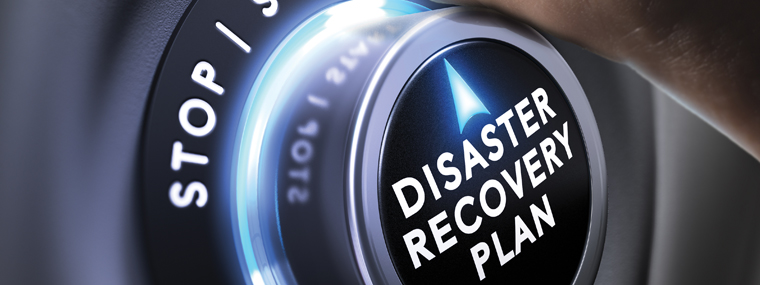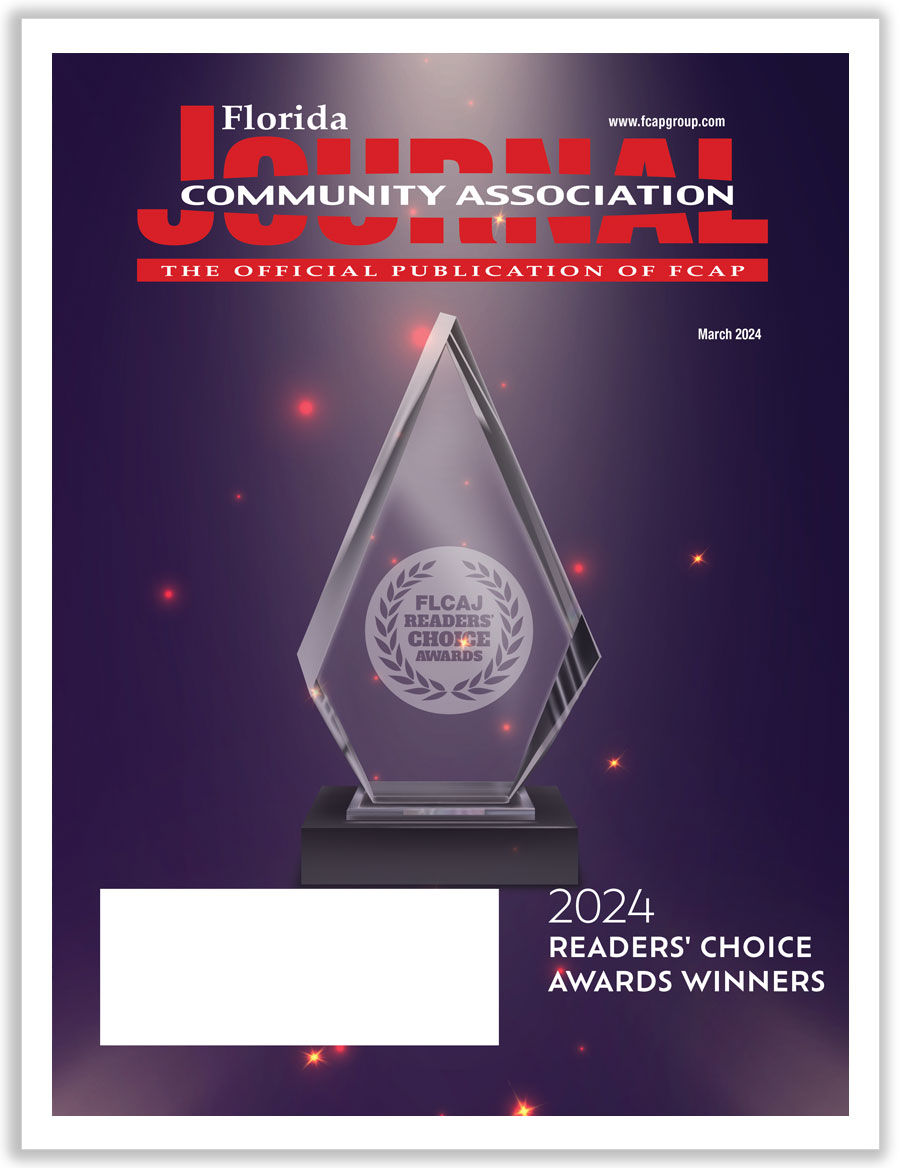
Creating a Disaster Recovery Plan for Your Community Association
By Rami Boaziz / Published February 2019

Every community association’s goal is to maintain a safe, healthy, and welcoming community. To uphold this mission, the association’s ownership and board must be prepared to support their community before, during, and after a disaster. But what does this mean in practice?
A disaster recovery plan will answer those questions. This article will walk you through the key components of a solid plan for your community association. Although the information here will give you a great start, it’s best to consult with an emergency management professional through your local county or state agency. They can provide expert advice and templates, and they will be able to customize the plan for your Florida community.
Resident Education
A disaster recovery plan begins with preparedness. Educate your residents about the types of disasters common in Florida (such as hurricanes, flooding, and water damage), their potential impact, frequency, and best practices for preparation. Circulate information in your newsletters or email updates. You could do this in conjunction with National Preparedness Month, sponsored by Ready.gov each September. The site offers easy-to-understand materials that you can repurpose for your residents.
Once you have created your plan, make sure residents have access to it. It’s important to call out specific sections—such as contact information, communication, and evacuation procedures—and post them prominently throughout the community. Even though you want your residents to be proactive, you should also keep emergency and first aid supplies ready in a designated location.
Roles and Responsibilities
Since most board members have little to no experience managing disaster response, you need to assess capabilities and willingness to participate. If disaster response was not agreed upon before their election, individual board members may not be able to (or want to) assume a leadership role during a disaster. If a management company is in place, see if on-site managers have the training to handle disaster response or if this could be added to their responsibilities. Many communities initiate volunteer emergency response committees. In this way, you can take advantage of any skills or training among your residents.
The final disaster recovery plan should clearly define the roles of the owners, board, and management company, as well as any volunteers. Once confirmed, each party should sign their understanding and agreement.
Professional Services
Your disaster plan should also have established, reliable contractors that you can rely on for support during your association’s recovery period. This list can also be shared with your residents as they work on assessing damages and arranging repairs for their individual properties.
For example, you may list contractors for water damage, tree and limb removal, general contracting services, painting, roofing, HVAC, electrical, plumbing, and glass replacement. You may also want to consider a public adjuster to support with assessing damages and effectively filing any claims with your insurance provider.
To avoid scrambling at the last minute trying to find help, create a complete list with the names and contact information of your preferred service providers. Here are some suggestions of professional support your plan should include:
- Water Mitigation Contractors
- Smoke Mitigation Contractors
- Mold Mitigation Contractors
- Public Adjusters
- Painters
- Plumbers
- Roofers
- Electricians
- Engineers
- Tree Services
Budget
The association’s plan should have a section dedicated to financial planning, resources, and spending authorization for disasters. This could include funding pre-disaster supplies and equipment, insurance deductibles, uninsured losses, debris removal, demolition, and other emergency expenditures.
Your budget plan should also include the answers to these questions:
- Who is authorized to approve contracts/expenditures during a disaster?
- Does this include the management company?
The treasurer should have access to bank accounts, balances, and checks with a procedure for authorization, spending limits, and
double signatures. Your association may also want to consider a credit card for emergency spending. Having all this defined in advance will expedite the recovery process, making it less stressful for everyone.
Document Safeguarding
The disaster plan should outline which documents should be safeguarded and where, as well as the person responsible. Although most documents have electronic copies, it is helpful to have hard copies in the event of power failures. Make a list of what you might need on hand right away. This might include the following:
- Articles of incorporation
- Insurance policies
- Bank account information and checks
- Equipment warranties or contracts
- Architectural drawings or blueprints
- Photographs of the property (updated regularly) for insurance purposes
- A copy of the disaster recovery plan
You should also have a document with the location, maps, and instructions for cut-off valves and switches for water, gas, electricity, sprinklers, and alarms.
Insurance
Understanding your insurance policies is critical for a swift disaster recovery. Your disaster plan should include an annual meeting with your insurance agent to review risks, coverage, deductibles, and resident responsibilities. Keep records of insurance agents, policy numbers/information, and loss reporting procedures in the plan. You should also proactively engage with a
public adjusting company and have their contact information. They act as your advocate during the claims process. For especially complex claims arising out of disasters, public adjusters can take some of the weight from your shoulders and help you maximize your settlement. Your residents may also need the services of a public adjuster to navigate their claims processes. Consider keeping a list of recommended public adjusters and their contact information to share with your community.
Communications and Evacuation
Knowing where to go and the status of the disaster response is critical to the safety of the community and to speed up recovery. Your plan should include clear instructions for evacuation, including maps, directions, and nearest shelters. You may want to specify a safe meeting place where everyone should report so you can get a headcount. This should be clearly defined in your pre-disaster education materials. Also, consider procedures for a resident canvas with particular attention to at-risk residents. Once emergency personnel have provided the all-clear for safety, you might establish a daily meeting to provide the community with updates.
Contact Information
Be sure to develop and maintain a printed resident and staff directory with names, address, phone numbers, email addresses, and emergency contact information. In addition, your disaster plan should have a comprehensive list of contacts related to all aspects of response and recovery. This list isn’t exhaustive, but it may include these resources:
- Local emergency management
- FEMA
- Police
- Fire Department
- Coast Guard
- American Red Cross
You should also include contact information for your association’s utility providers like electric, gas, cable, phone, and water/sewer.
Remember to provide the contact information for preferred contractors, public adjusters, and other service providers should your team or residents need to address individual claims repairs for their personal property. Working together with your community and a team of trusted professionals can help the recovery process move quickly and effectively.
It is never too soon to get started on your disaster recovery plan. Having a comprehensive plan in place will simplify the chaos of disaster response, minimize the impact, and best serve your entire community.
*Disclaimer: The content of this article is provided for informational purposes only. It is not intended nor should it be viewed as legal advice. Consult with an attorney on your particular circumstances before making any decisions based on the information provided in this article. Stellar Public Adjusting Inc. assumes no legal liability for the accuracy, completeness, or usefulness of any information disclosed in this article.
Rami Boaziz
Senior Public Adjuster, Stellar Public Adjusting
Rami Boaziz is the Senior Public Adjuster at Stellar Public Adjusting. In addition to being a public adjuster, Mr. Boaziz is also a licensed attorney and mediator in Florida. He is a true consumer advocate who has helped individuals, community associations, and businesses maximize their insurance claim settlements. Rami teaches a class approved for CE credits called Condominium Insurance Claims 101 and frequently offers free Q&A sessions at HOA meetings. You can reach Rami via email at rami@stellaradjusting.com. To learn more about Stellar Public Adjusting, visit them online at www.stellaradjusting.com.




